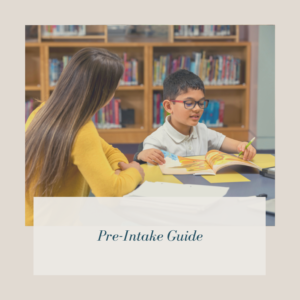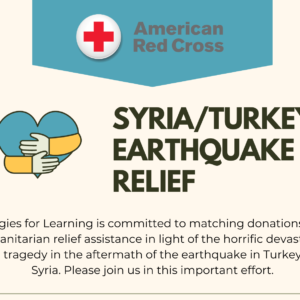No products in the cart.

Amidst the uncertainties around new variants and surges, we empathize with families experiencing anxiety over potential school closures, learning set-backs, or a return to “zoom fatigue.” We understand families will have questions and concerns about virtual learning and we hope the Q&A guide below will help address them. Our goal remains to support students so that they can continue to progress and thrive despite the challenges of the pandemic. We are available to listen to your concerns, share our recommendations, and provide reassurance along the way!
Q: My child has been exposed to COVID, what should I do?
If a student or a member of the student’s household gets tested positive for COVID-19 or has flu-like symptoms, in-person sessions should be replaced with virtual sessions until symptoms are fully resolved and the student has a negative COVID test. The same policy applies to Clinicians.
Q: I’m concerned about switching over to virtual sessions for my child. Are your sessions engaging and interactive?
We are poised to provide a highly specialized level of interactive virtual learning! Interactive learning typically includes a real-time lesson where students are actively engaged throughout with continuous teacher feedback. This type of learning is the gold standard for many students, especially those with a neurodiverse profile. Examples of virtual interactive learning include multi-sensory activities, using an interactive online platform and/or physical materials, real-time lessons with direct teacher feedback (e.g. scaffolding and support while solving a multi-step word problem in math), hands-on games and activities.
Q: How do you address “Zoom fatigue”?
There can be many factors that can lead to zoom fatigue. For children and teens, zoom fatigue is often the result of reduced mobility, cognitive overload, and a passive learning environment. Here is how we address it:
Incorporating planned movement and sensory breaks within a session can increase productivity. Doing a short physical activity away from the screen prior to and after a virtual session is also a great way to avoid fatigue.
Virtual sessions can also lead to cognitive overload, especially in group settings with multiple participants. 1:1 sessions allow Clinicians to give their full attention to one student, allowing them to observe the student’s demeanor and body language and adjust their pacing and communication strategies to increase student engagement.
A passive learning environment is typically characterized by minimal student participation, little direct interaction and real-time feedback from their teacher. This type of learning may also require a high level of oversight from parents at home. A highly interactive learning environment can support regulation, motivation, and independence. There should also be room for a little fun and humor, as well as some high-interest activities that can be coupled with a reward system for more reluctant learners.
Q: How do you engage students who may be inattentive or easily distracted, especially online?
Mental and physical organization is an important aspect of creating an effective virtual learning experience. We can share guidance with students on how to set up a productive workspace at home. We can help create a checklist of what students will need to bring and prepare for each session as well as help prepare visual aides or hands-on materials students can reference and use at home. Additionally, incorporating planned movement and sensory breaks is especially beneficial for students who may have attentional difficulties. We also teach students active listening strategies that align with how they retrieve information.
Q: What type of online tools do you use?
Clinicians use a variety of tools based on age, and the unique needs and learning style of the student. Some examples include interactive whiteboards, gamification tools, digital graphic organizers, quizzing tools, peer-editing tools, music and more. We also invest in specialized digital resources that have been carefully screened by our team of educational specialists. (ex: IMSE, assessment tools)
Q: How does “multi-sensory” learning happen virtually?
Many multi-sensory activities can be facilitated virtually with the right preparation. Here are some examples we’ve utilized with our students:
- Visual: Flow charts, graphic organizers, picture flashcards, slides
- Kinesthetic: Movement breaks, role-playing scenarios, room scavenger hunts
- Auditory: Music, listening to a debate or speech
- Tactile: Flashcards, playing cards, letter blocks, and other math and reading manipulatives
Q: Do you collaborate with school teachers?
Definitely! We can communicate with school teachers, administrators and other allied professionals on your child’s team to communicate progress, set goals, address concerns, and collaborate. If you would like us to initiate collaboration with your child’s school teachers, please let your Clinician know.
I was worried that switching to remote sessions wouldn’t work for my son who is now almost 9 and VERY active and easily distracted. I was even more worried that he would lose momentum with his emerging reading skills… He LOVES meeting with his Clinician and his reading skills have continued to grow and blossom. SfL has done an amazing job of keeping him engaged in his virtual sessions and he looks forward to every session with her….You “get” our kids and are always such a great support but it means even more during these crazy times.
Mother of 2nd Grader






No comment yet, add your voice below!